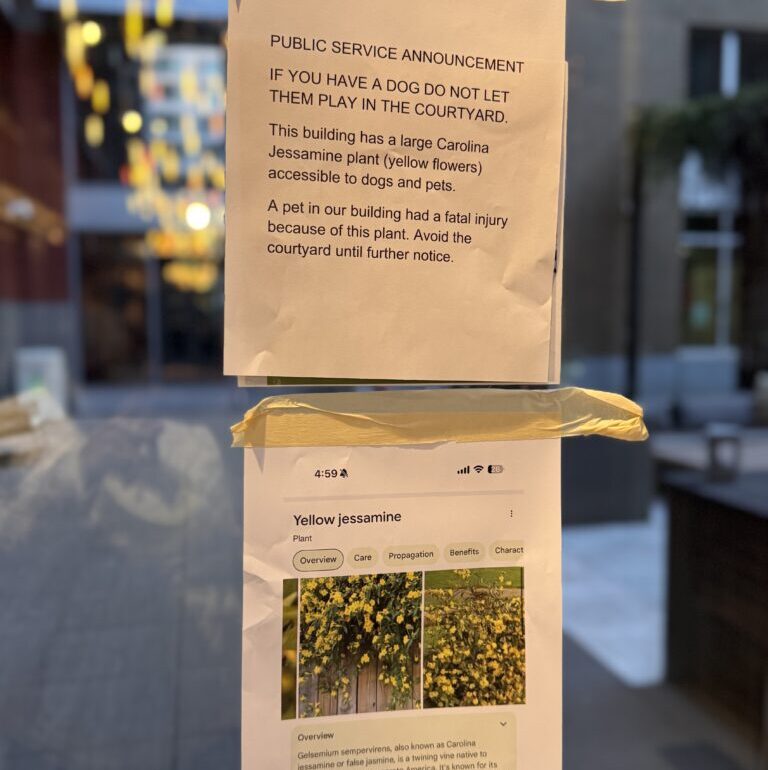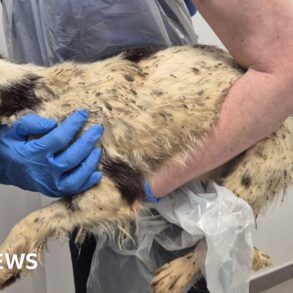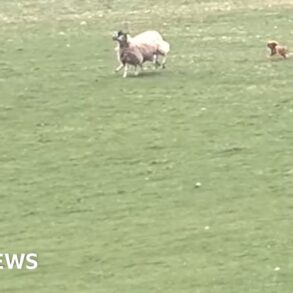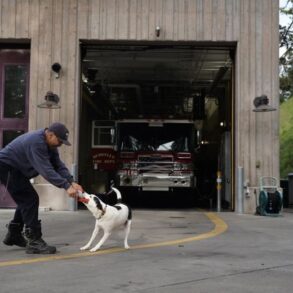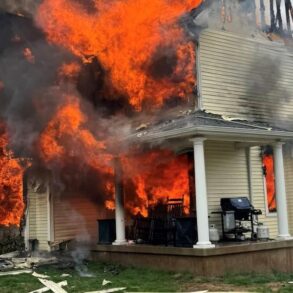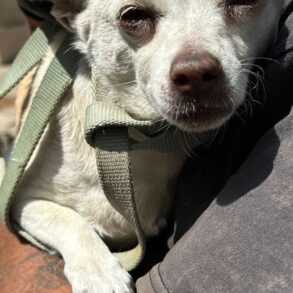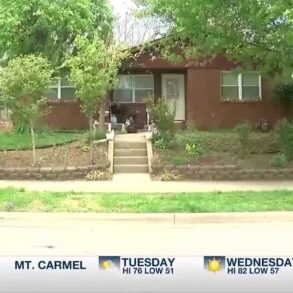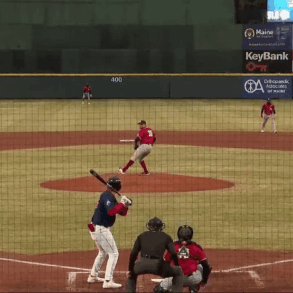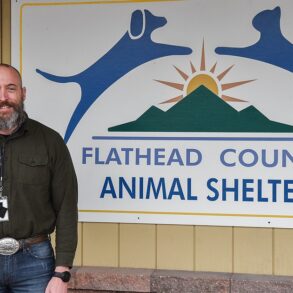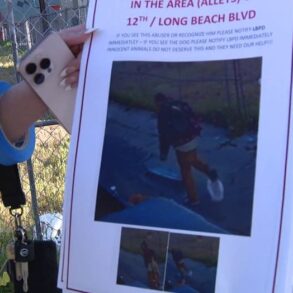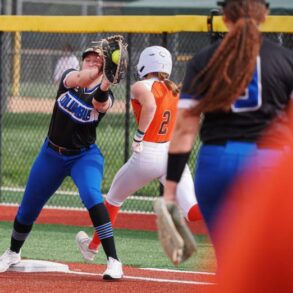
“Dear PoPville,
I’m reaching out to share a pressing public safety concern that recently came to light in our community.
Incident: A dog tragically died after ingesting Carolina jessamine (Gelsemium sempervirens) in the courtyard of a luxury apartment complex in Shaw.

Goose
The Issue: This plant is known to be highly toxic to pets, with even small amounts causing fatal reactions. Despite this, it’s commonly used in landscaping across DC, including in areas frequented by pets and children.
We have garnered almost 400 signatures on our petition since we launched it yesterday.
Response:
The landscaping company has denied responsibility, and the apartment complex, The Lurgan, has refused to remove the plant or restrict access, even after the incident.
Action Taken: I’ve drafted and submitted proposed legislation to the DC Council and Mayor’s Office to ban the use of Carolina jessamine in publicly accessible spaces.”

Legislative Justification Brief: Ban on the Use of Carolina Jessamine in Public Landscaping Policy Proposal: We urge the DC Council and the Mayor’s Office to introduce legislation that prohibits the planting and use of Carolina jessamine (Gelsemium sempervirens) in public-facing landscapes throughout the District of Columbia. This includes parks, sidewalks, courtyards, apartment green spaces, and any areas accessible to pets and children. The legislation should also direct relevant agencies such as the Department of Energy & Environment (DOEE) and the Urban Forestry Division to update approved plant lists, enforce compliance, and provide educational outreach to landscaping companies and property developers.
Toxicological Risks: Carolina jessamine is a well-documented toxic plant that contains potent neurotoxins, including gelsemine and sempervirine. According to the ASPCA, Pet Poison Helpline, and veterinary toxicology reports, ingestion of even a small quantity can result in serious symptoms such as muscle weakness, breathing difficulty, respiratory failure, and death. It poses a particular danger to domestic pets, small children, and wildlife. The plant’s bright yellow, fragrant flowers may attract curious animals and children, increasing the risk of accidental poisoning.
Incident Overview: A DC resident’s dog recently passed away after ingesting part of a Carolina jessamine plant located in a publicly accessible courtyard of The Lurgan, an apartment complex in Shaw. The courtyard is open to residents and pets, yet remains landscaped with this hazardous plant. Despite outreach efforts, the property management company declined to remove the plant or restrict access to the space. The landscaping company involved downplayed the danger, claiming the plant is only toxic in high doses—a position inconsistent with expert guidance and fatality reports. This tragic event illustrates the urgent need for policy action.
Veterinary and Horticultural Guidance:
ASPCA Animal Poison Control Center: Lists Gelsemium sempervirens as toxic to dogs, cats, and horses.
Pet Poison Helpline: Notes that even minimal ingestion can result in life-threatening symptoms.
University of California Agriculture & Natural Resources: Includes Carolina jessamine in its database of toxic plants, citing fatal poisonings.
Texas A&M University’s Poisonous Plants Resource: Confirms toxicity to humans and animals.
Preventive Action and Public Responsibility: DC has the opportunity to set a precedent by prioritizing public health and safety through responsible landscaping practices. With a high number of pet owners in our city and a growing emphasis on creating accessible, safe green spaces, the continued use of Carolina jessamine in shared environments undermines these goals. As the District leads on animal welfare, environmental responsibility, and inclusive community design, it must eliminate preventable threats such as this.
Pet-Safe Alternatives: DC should encourage native, non-toxic alternatives for public landscaping, such as:
Coral Honeysuckle (Lonicera sempervirens) – a beautiful, non-toxic climber
American Wisteria (Wisteria frutescens) – fragrant and pet-safe
Virginia Creeper (Parthenocissus quinquefolia) – native and adaptable
Conclusion: This legislation is a commonsense, low-cost intervention that will prevent future tragedies and foster a safer, more pet-friendly DC. We respectfully request your leadership in addressing this risk with urgency and compassion. The District’s pets, families, and broader community deserve nothing less.

Draft Legislative Language
Council of the District of Columbia
A BILL
IN THE COUNCIL OF THE DISTRICT OF COLUMBIA
To prohibit the planting, installation, or maintenance of Gelsemium sempervirens (Carolina jessamine) on public land and in publicly accessible areas within the District of Columbia; to require removal of existing plantings in public-facing landscaping; and to promote safe alternatives through public outreach and agency guidance.
BE IT ENACTED BY THE COUNCIL OF THE DISTRICT OF COLUMBIA:
SECTION 1. SHORT TITLE. This Act may be cited as the “Carolina Jessamine Public Safety Planting Prohibition Act of 2025.”
SECTION 2. FINDINGS. (a) WHEREAS, Gelsemium sempervirens is a flowering vine widely known as Carolina jessamine; (b) WHEREAS, the plant contains gelsemine and related alkaloids that are toxic to humans and animals; (c) WHEREAS, the ASPCA, veterinary poison control centers, and university agricultural extensions classify the plant as highly toxic and potentially fatal, even in small amounts; (d) WHEREAS, a District resident’s dog recently died after ingesting the plant in a publicly accessible area; (e) WHEREAS, the presence of this plant in public spaces poses a preventable threat to pets, children, and vulnerable populations;
SECTION 3. PROHIBITION. (a) The planting, installation, or maintenance of Gelsemium sempervirens shall be prohibited in all:
(1) District-owned parks, recreation areas, and medians;
(2) Public right-of-way and sidewalk tree boxes;
(3) Publicly accessible courtyards or landscaping of multi-unit housing developments. (b) Existing installations of Gelsemium sempervirens in publicly accessible areas must be removed within 180 days of the effective date of this Act.
SECTION 4. AGENCY RESPONSIBILITIES. (a) The Department of Energy & Environment (DOEE) shall update its approved plant lists to reflect this restriction. (b) The Urban Forestry Division shall ensure public guidance, inspection, and enforcement as part of its landscaping oversight. (c) The Office of Planning and Department of Buildings shall include this ban in all future landscaping guidance issued to developers and property managers.
SECTION 5. PUBLIC EDUCATION. The District shall develop and distribute educational materials to inform residents, landscapers, and developers about the risks of toxic plants and recommend non-toxic, native alternatives.
SECTION 6. EFFECTIVE DATE. This Act shall take effect following approval by the Mayor, a 30-day period of congressional review, and publication in the District of Columbia Register.”
This post was originally published on this site be sure to check out more of their content.


